The fitness industry has come a long way from the track and weight rack. There are thousands of specialized fitness classes and workouts trends—to the point that it can be intimidating to start a new regimen.
You can boil down the various types of exercise into four categories: aerobic or endurance, strength, balance, and flexibility. But, your body might not be suited or ready for one or another. There’s a lot to consider before you ever lace up your sneakers, which is why it helps to have the team at Elitra Health Center guiding you through your fitness journey.
Here at Elitra Health Center, you’ll undergo a personal consultation with an our certified exercise physiologist. They will lead you through a body composition and muscle mass analysis where they will take visceral fat measurements. Visceral fat is the fat surrounding your organs that can increase insulin resistance and raise your blood pressure. This analysis will not only help determine workouts but give you the most accurate sense of progress.
Our exercise physiologist will conduct a comprehensive flexibility, strength and cardiovascular assessment to create a personalized fitness program for you that same day. They’ll also demonstrate and practice each exercise with you to make sure you feel comfortable and confident while exercising.
To help you explore your options and give you the language to discuss what you like, dislike, and need with your exercise specialist, we’ve broken down eight workouts to give you a healthier life below.
Running
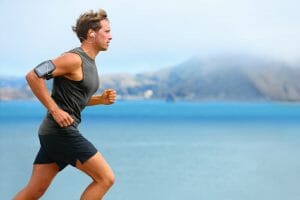
A simple and classic workout, running packs a diverse range of benefits.
In addition to weight loss, improved sleeping habits, and better focus at work, a study published by the American College of Sports Medicine found that spending 30 minutes on a treadmill can improve the mood of someone suffering from major depressive disorder. If you are worried about your joints, know that research has shown that runners are less likely to suffer from knee pain or osteoarthritis—as long as they aren’t overtraining or using bad form.
Weight Training
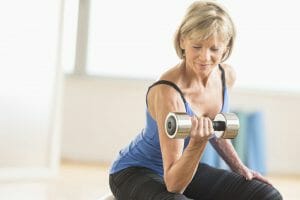
Weight lifting isn’t just for footballers and body builders. We can help you find a respected weight trainer in your community, or work together to develop and demonstrate a list of strength training exercises appropriate for your health and goals.
Strength training builds muscles and ultimately leads to a higher metabolism, but studies have shown that strength training can slow bone loss and even promote bone growth. Enhanced strength and flexibility will also further your risk of a dangerous fall while helping you meet weight and fitness goals. An Appalachian State University study found that people who regularly performed 45 minutes of resistance exercise lowered their blood pressure by 20 percent.
Yoga
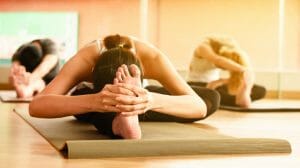
There are various styles of yoga—from bikram (or hot) yoga to your standard vinyasa—all of which your fitness expert at Elitra Health can explain and demonstrate to you. A low-impact balance exercise, yoga can help build muscle and raise your heart rate to burn calories and improve your blood pressure. The practice is also hugely popular for its ability to improve flexibility and reduce pain and stress. According to studies from the National Center for Complementary and Integrative Health, practicing yoga was found to significantly less disability, pain, and depression after six months. The American Heart Association also recommends that older adults should do balance training three or more days a week to reduce risk of falls.
Barre
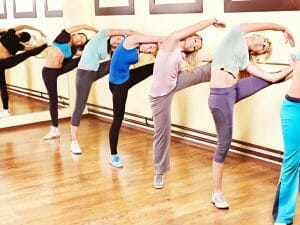
Barre is a mix of yoga, pilates, and functional ballet training. The “barre” refers to the bar that ballerinas grip while training, and this low-impact workout partially mimics a ballet class. Barre focuses on isometric holds, such as planks and standing leg lifts, that promote lean muscle tone and improved posture.
Barre can also help those suffering from back pain, as the workout engages your core muscle throughout the class.
Swimming
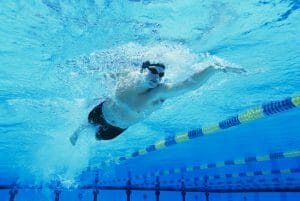
If you have access to a pool or clean lake, swimming is one of the most effective workouts for a healthier life. It’s an all-body exercise with incredibly low-impact pressure on your joints. Your muscles will work harder compared to running, as you are using less oxygen to propel yourself. The exercise also exercises your upper body and core more than some other cardio workouts. While running still burns more calories than swimming, people who suffer from joint pain or have better endurance in the cool of the pool will enjoy the switch.
Kickboxing
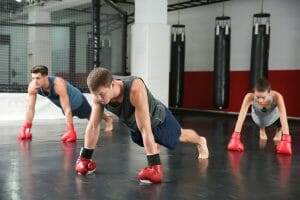
If you don’t picture yourself as someone who would try kickboxing, these benefits will change your mind.
Research shows that the brief stretch of high-intensity interval training (HIIT) associated with kickboxing is just as beneficial to your heart and lung health as 45 minutes of less-intense exercise. The American Council on Exercise has also found that a cardio kickboxing class can burn more than eight calories per minute.
Kickboxing is a great workout no matter how old you are, and it’s also proven to improve both your anticipatory and reactive balance to reduce the risk of falls as you age. It’s also, of course, an amazing stress relief for days when life has you a little more heated than usual.
Pilates
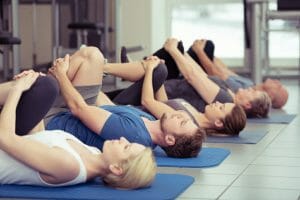
Pilates uses a combination of repetitive exercises to engage and strengthen your muscles. Like barre, this workout focuses on tiny movements to improve posture and strength. Pilates, however, moves at a slower pace, as it focuses on mindfulness and breathing that result in cognitive benefits as well as physical.
Biking

If you haven’t hopped on a bike since you were a kid, it’s time to rethink your workout routine.
Harvard Medical reports that the downstroke of cycling works your gluteus muscles, the quads in your thighs, and your calves while the upstroke works your hamstrings and flexor muscles in the front of the hips. Balancing upright engages your core and arm and shoulder muscles, while the resistance of the bike also pulls on the muscles, leading to increased bone density.
Cycling also redistributes your weight to your pelvis while exercising, making it a great workout for anyone suffering from joint pain associated with walking.

